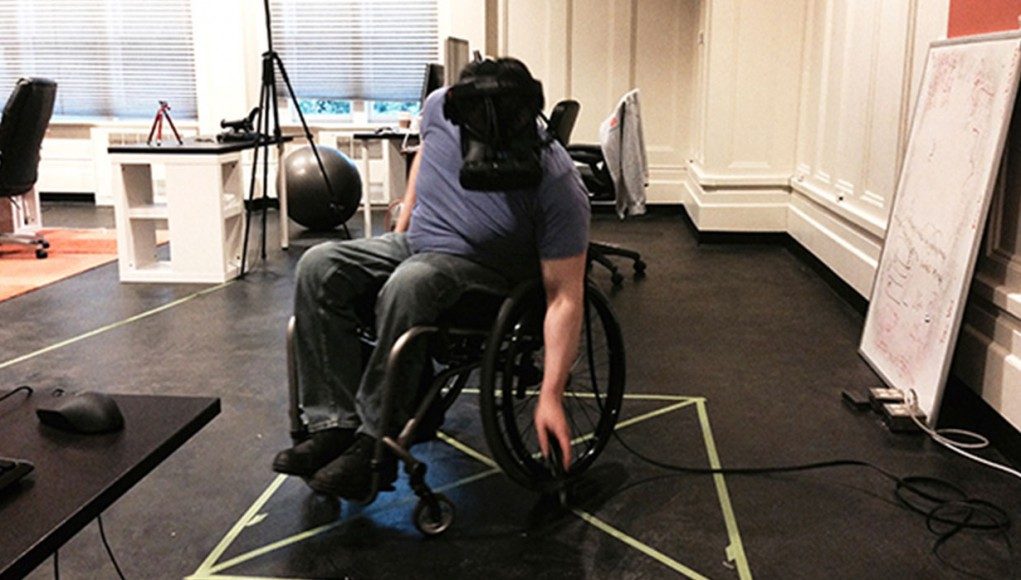 Brian Van Buren is a narrative designer at Tomorrow Today Labs, and he’s also a wheelchair user who has been evangelizing how to make virtual reality experiences more accessible. I had a chance to catch up with him at the Intel Buzz Workshop in June where we talked about some of his accessibility recommendations to other virtual reality developers, some good and bad examples of accessibility in VR, as well as some of things that VR technologies enable him to do in a virtual world that he can’t do in the real world.
Brian Van Buren is a narrative designer at Tomorrow Today Labs, and he’s also a wheelchair user who has been evangelizing how to make virtual reality experiences more accessible. I had a chance to catch up with him at the Intel Buzz Workshop in June where we talked about some of his accessibility recommendations to other virtual reality developers, some good and bad examples of accessibility in VR, as well as some of things that VR technologies enable him to do in a virtual world that he can’t do in the real world.
LISTEN TO THE VOICES OF VR PODCAST
Some of the primary recommendations that Van Buren gives is that you can’t assume the dimensions of your user. Just because he’s is 4 foot 6 inches, doesn’t mean that he should be automatically assigned a child’s body avatar. Also, because he’s primarily sitting down, he’d still like to be able to participate in games that require you to crouch down and duck. Some of the experiences that handle this well are Hover Junkers that provides a head model adjustment for people of different heights, and he’s also able to play Space Pirate Trainer. The little human mode in Job Simulator will also raise the head a foot and a half to provide access to both children as well as people in wheelchairs.
Van Buren recommends against placing objects on the ground as they’re essentially game-breaking bugs for people in wheelchairs, but also generally not ergonomically comfortable for most people. Placing buttons at waist height when standing has the side effect of being fairly comfortable for people are sitting or in a wheelchair, and that highly placed objects are completely out of reach. There are Americans with Disabilities Act (ADA) regulations that most federal and government buildings have to follow, and virtual reality environment developers should keep some of these design constraints in mind.
He says that it’s easier to take accessibility into consideration at the design stage rather than afterwards, and so the sooner that you account for mobility constraints, the better. There are tradeoffs of including kinesthetic gameplay mechanics like crouching, crawling, bending, reaching up that may provide deeper sense of presence for able-bodied people who are of a certain height, but Van Buren asks to consider whether or not some of those mechanics are absolutely vital to the game that it’s worth making the game inaccessible to a portion of people.
Van Buren had heard my previous interview with Katie Goode about accessibility, which encouraged him in that there were other people who were thinking about making VR more accessible. Katie wrote up a great blog post talking about the accessibility design considerations in Unseen Diplomacy, and Adrienne Hunter also wrote up a great overview of designing VR for people with physical limitations.
For a more in-depth discussion on “Making VR and AR Truly Accessible,” then be sure to also check out this Virtual Reality Developer’s Conference panel discussion featuring Minds + Assembly’s Tracey John, Radial Games’ Andy Moore, Tomorrow Today Labs’ Brian Van Buren, and independent designer Kayla Kinnunen:
Support Voices of VR
- Subscribe on iTunes
- Donate to the Voices of VR Podcast Patreon
Music: Fatality & Summer Trip







